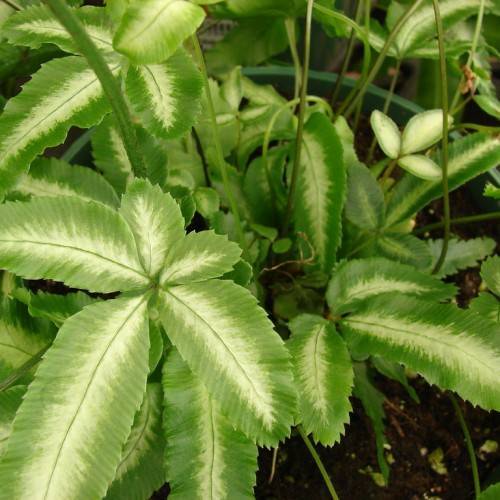
table fern
Pteris ensiformis
Also Known As - silver lace fern,variegated brake fernCycle:
Herbaceous Perennial
Watering:
Minimal
Hardiness Zone:
5
Flowers:
Flowers In Spring
Sun:
Part sun/part shade
Leaf:
Yes
Growth Rate:
High
Care Level:
Medium
watering
Water the yellow corydalis soil thoroughly, allowing the water to fully saturate the soil, when the top 2-4 inches of soil feels dry to the touch. This usually means watering once every week to 10 days. Make sure not to over-water, as yellow corydalis does not like to have its roots water-logged. Next, reduce the frequency and amount of water provided in late winter and spring, as the plant goes dormant at this time. During the summer months, it may need more frequent watering to keep the soil from drying out.
sunlight
Yellow corydalis (Pseudofumaria lutea) thrives best in full sun to partial shade and can tolerate extended periods of shade. When planted in full sun locations, the plant will receive the full 6 to 8 hours of optimal direct sunlight per day, which should be provided in the morning to midday hours to avoid harsh afternoon summer heat. When planted in partial shade, the plant should receive a minimum of 3 to 4 hours of direct sunlight per day, with additional light coming from indirect sources, like a nearby window or light reflecting from a white building.
pruning
Yellow corydalis should be pruned in late winter or early spring to keep it in a manageable shape and promote a healthy plant. Start by pruning back long branches to maintain the original height you want the plant to reach. Then, either thin out or lightly prune the small branches to create a more open look for the plant. With yellow corydalis, pruning should be done in moderation - too much pruning could reduce its flowering capacity.
